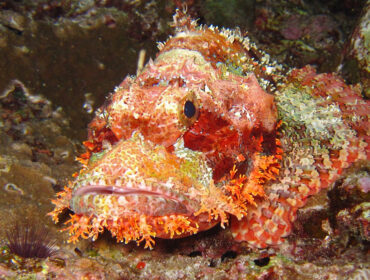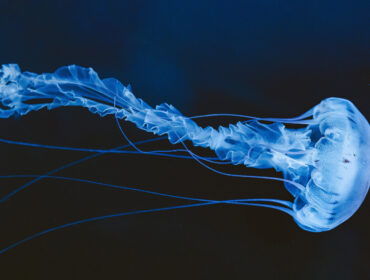Of all the hype that surrounds sharks these days, more often than not the bulk of the attention goes to the larger, beefier sharks, like great whites, hammerheads, and bulls, but there are a few demure species who tend to stay out of the limelight. Everything about them, from their appearance to their behavior, is a world apart from the sharks more often seen in the news, but it is no less captivating if you ask us. One such species that we think deserves its own moment in the spotlight is the Port Jackson shark.
Hailing from the order Hederodontiformes, also known as bullhead or horn sharks, the Port Jackson shark has some very unique characteristics that differentiate it from its other elasmobranchii brethren. The most foremost of these is the well-defined nostrils of the shark, which are rounded and very much resemble the snout of a bull, which is no doubt the origin of the “bullhead” moniker. But it only gets weirder from there.
Nestled between those huge, bull-like nostrils are a strange collection of teeth that begin on the exterior of the Port Jackson shark’s mouth, sort of like a rounded meat tenderizer. At the very front, the teeth are small and sharp, but as they progress into the jaw they become more broad and flat, similar to human molars. This peculiar set of teeth is ideal for consuming the Port Jackson shark’s primary food source: sea urchins, mollusks, crustaceans, and small fish. The anterior teeth deftly snap up prey, while the posterior teeth smash shells to get at the meat.
Perhaps even stranger than its mouth is the Port Jackson shark’s stomach. If something does not agree with the shark or cannot be digested, the stomach can be turned inside out and ejected through the mouth to empty its contents. Unlike other sharks, this species can feed and breathe at the same time due to the unique makeup of its gills, which allow water to be pumped across the gills without having to swim, leaving the mouth free to catch prey and eat.
There are other Hederodontiformes that share the Port Jackson’s physiological characteristics, but its markings identify it easily as separate from the rest: blackish brown bands that run around the front of the body on the eyes, down its back to the dorsal fin, and around the midsection of the body, looking almost like a harness. It resides in the relatively shallow tropical and subtropical waters of Australia, although it is thought to have originated in South Africa.
Because the Port Jackson shark is nocturnal and a bottom-feeder, your best chance to catch a glimpse of one is at night, foraging close to the seabed, or in the day sheltering under a rocky crag or cave. Like other seemingly docile sharks, the Port Jackson doesn’t necessarily spell danger for divers, but attempting to interfere with it may introduce you to the power of those crazy teeth!




